python tensorflow 各种神经元
-
感知机神经元(Perceptron Neuron):
-
最基本的人工神经元模型,用于线性分类任务。
import numpy as npclass Perceptron:def __init__(self, input_size, learning_rate=0.01, epochs=1000):self.weights = np.zeros(input_size + 1) # 加上一个偏置self.learning_rate = learning_rateself.epochs = epochsdef activation(self, x):return 1 if x >= 0 else 0def predict(self, x):summation = np.dot(x, self.weights[1:]) + self.weights[0]return self.activation(summation)def train(self, training_inputs, labels):for _ in range(self.epochs):for inputs, label in zip(training_inputs, labels):prediction = self.predict(inputs)self.weights[1:] += self.learning_rate * (label - prediction) * inputsself.weights[0] += self.learning_rate * (label - prediction)# 示例数据 training_inputs = np.array([[1, 1], [1, 0], [0, 1], [0, 0]]) labels = np.array([1, 0, 0, 0])# 创建感知机实例并训练 perceptron = Perceptron(input_size=2) perceptron.train(training_inputs, labels)# 测试感知机 inputs = np.array([1, 1]) print("Input:", inputs, "Prediction:", perceptron.predict(inputs))inputs = np.array([0, 0]) print("Input:", inputs, "Prediction:", perceptron.predict(inputs))代码解释
- 类定义:
Perceptron类包含了初始化函数、激活函数、预测函数和训练函数。 - 初始化: 初始化权重为零,并设置学习率和训练轮数。
- 激活函数: 使用阶跃函数(step function)作为激活函数。
- 预测函数: 计算输入和权重的加权和,然后通过激活函数得到输出。
- 训练函数: 使用感知机学习规则,迭代更新权重。
- 示例数据: 二分类数据集(逻辑与问题)。
- 训练与测试: 训练感知机并测试其对新输入的预测。
- 类定义:
-
-
多层感知机神经元(Multi-Layer Perceptron, MLP):
-
包含多个隐藏层的感知机,能够学习复杂的非线性关系。
-
使用一个简单的MLP模型来处理二分类任务。
import numpy as npfrom keras.models import Sequential from keras.layers import Dense# 生成示例数据 # 输入数据:4个样本,每个样本2个特征 training_inputs = np.array([[0, 0], [0, 1], [1, 0], [1, 1]]) # 标签:与XOR逻辑相符的二分类标签 labels = np.array([[0], [1], [1], [0]])# 创建MLP模型 model = Sequential() model.add(Dense(4, input_dim=2, activation='relu')) # 隐藏层,包含4个神经元,ReLU激活函数 model.add(Dense(1, activation='sigmoid')) # 输出层,1个神经元,sigmoid激活函数用于二分类# 编译模型 model.compile(loss='binary_crossentropy', optimizer='adam', metrics=['accuracy'])# 训练模型 model.fit(training_inputs, labels, epochs=1000, verbose=0)# 测试模型 test_inputs = np.array([[0, 0], [0, 1], [1, 0], [1, 1]]) predictions = model.predict(test_inputs)# 输出测试结果 for i, test_input in enumerate(test_inputs):print(f"Input: {test_input}, Predicted: {predictions[i][0]:.4f}")代码解释
- 库导入: 导入必要的库,包括
numpy用于数据处理,Sequential用于构建模型,Dense用于构建层。 - 数据准备: 创建一个简单的XOR逻辑问题的数据集。
- 模型构建:
- 使用
Sequential构建模型。 - 添加一个隐藏层,包含4个神经元,使用ReLU激活函数。
- 添加一个输出层,包含1个神经元,使用sigmoid激活函数(适合二分类任务)。
- 使用
- 模型编译: 使用二元交叉熵损失函数和Adam优化器进行编译,并指定准确率为评估指标。
- 模型训练: 训练模型1000个轮次,设置
verbose=0以抑制训练期间的详细输出。 - 模型测试: 使用训练好的模型对测试数据进行预测,并输出结果。
- 库导入: 导入必要的库,包括
-
-
卷积神经网络神经元(Convolutional Neural Network, CNN):
-
专门用于处理图像数据,通过卷积层提取空间特征。
-
构建一个简单的 RNN 来处理时间序列数据,例如序列预测任务。
from keras.models import Sequential from keras.layers import SimpleRNN, Dense import numpy as np# 生成示例数据 # 假设有一个时间序列数据集,每个序列长度为5,特征数量为1 X = np.array([[[0.0], [1.0], [2.0], [3.0], [4.0]],[[1.0], [2.0], [3.0], [4.0], [5.0]],[[2.0], [3.0], [4.0], [5.0], [6.0]], ]) y = np.array([5.0, 6.0, 7.0])# 创建 RNN 模型 model = Sequential() model.add(SimpleRNN(10, activation='relu', input_shape=(5, 1))) model.add(Dense(1))# 编译模型 model.compile(optimizer='adam', loss='mse')# 训练模型 model.fit(X, y, epochs=200, verbose=0)# 预测 new_sequence = np.array([[[3.0], [4.0], [5.0], [6.0], [7.0]]]) prediction = model.predict(new_sequence) print("Predicted value:", prediction)代码解释
- 导入必要的库:使用 TensorFlow 和 Keras 来构建和训练 RNN 模型,同时用 NumPy 生成示例数据。
- 生成示例数据:创建一个时间序列数据集
X和相应的目标值y。 - 创建模型:使用
Sequential模型构建一个包含一个SimpleRNN层和一个Dense层的简单 RNN 模型。 - 编译模型:使用
adam优化器和均方误差损失函数编译模型。 - 训练模型:用示例数据训练模型 200 个 epochs。
- 进行预测:用训练好的模型对一个新的时间序列进行预测。
-
-
循环神经网络神经元(Recurrent Neural Network, RNN):
-
能够处理序列数据,具有记忆功能,适用于时间序列分析、语言模型等。
-
使用RNN处理序列数据。将创建一个模型来预测给定序列的下一个数字。
import tensorflow as tf from keras.models import Sequential from keras.layers import SimpleRNN, Dense import numpy as np# 生成示例数据 # 假设有一个时间序列数据集,每个序列长度为5,特征数量为1 X = np.array([[[0.0], [1.0], [2.0], [3.0], [4.0]],[[1.0], [2.0], [3.0], [4.0], [5.0]],[[2.0], [3.0], [4.0], [5.0], [6.0]], ]) y = np.array([5.0, 6.0, 7.0])# 创建 RNN 模型 model = Sequential() model.add(SimpleRNN(10, activation='relu', input_shape=(5, 1))) model.add(Dense(1))# 编译模型 model.compile(optimizer='adam', loss='mse')# 训练模型 model.fit(X, y, epochs=200, verbose=0)# 预测 new_sequence = np.array([[[3.0], [4.0], [5.0], [6.0], [7.0]]]) prediction = model.predict(new_sequence) print("Predicted value:", prediction)代码解释
- 数据生成与准备:
generate_sequence(): 生成一个简单的序列。prepare_data(): 准备训练数据,将序列转换为模型可以接受的格式。
- 模型构建:
- 使用
Sequential构建模型。 - 添加一个
SimpleRNN层,包含10个神经元,输入形状由数据决定,return_sequences=True表示输出每个时间步的结果。 - 添加一个
Dense层作为输出层,预测序列的下一个值。
- 使用
- 模型编译: 使用均方误差作为损失函数,使用Adam优化器。
- 模型训练: 训练模型1000个轮次,
verbose=0表示不显示训练过程中的详细信息。 - 模型测试: 使用模型预测给定序列的下一个值。
- 数据生成与准备:
-
-
长短期记忆网络神经元(Long Short-Term Memory, LSTM):
-
RNN的一种,通过门控机制解决长期依赖问题,适合处理长序列数据。
-
长一个简单的LSTM模型示例,用于预测时间序列数据。
import numpy as np from keras.models import Sequential from keras.layers import LSTM, Dense from sklearn.preprocessing import MinMaxScaler import matplotlib.pyplot as plt# 生成示例数据 np.random.seed(0) data = np.sin(np.linspace(0, 100, 1000)) + np.random.normal(scale=0.5, size=1000)# 数据预处理 scaler = MinMaxScaler(feature_range=(0, 1)) scaled_data = scaler.fit_transform(data.reshape(-1, 1))# 创建训练和测试数据集 train_size = int(len(scaled_data) * 0.8) train, test = scaled_data[:train_size], scaled_data[train_size:]# 创建数据集函数 def create_dataset(data, time_step=1):X, Y = [], []for i in range(len(data) - time_step - 1):a = data[i:(i + time_step), 0]X.append(a)Y.append(data[i + time_step, 0])return np.array(X), np.array(Y)time_step = 10 X_train, y_train = create_dataset(train, time_step) X_test, y_test = create_dataset(test, time_step)# Reshape input to be [samples, time steps, features] which is required for LSTM X_train = X_train.reshape(X_train.shape[0], X_train.shape[1], 1) X_test = X_test.reshape(X_test.shape[0], X_test.shape[1], 1)# 创建LSTM模型 model = Sequential() model.add(LSTM(50, return_sequences=True, input_shape=(time_step, 1))) model.add(LSTM(50, return_sequences=False)) model.add(Dense(1)) model.compile(optimizer='adam', loss='mean_squared_error')# 训练模型 model.fit(X_train, y_train, epochs=20, batch_size=32, verbose=1)# 预测 train_predict = model.predict(X_train) test_predict = model.predict(X_test)# 逆缩放预测值 train_predict = scaler.inverse_transform(train_predict) test_predict = scaler.inverse_transform(test_predict) y_train = scaler.inverse_transform(y_train.reshape(-1, 1)) y_test = scaler.inverse_transform(y_test.reshape(-1, 1))# 可视化结果 plt.figure(figsize=(14, 8)) plt.plot(data, label='True Data') train_predict_plot = np.empty_like(data) train_predict_plot[:] = np.nan train_predict_plot[time_step:len(train_predict) + time_step] = train_predict[:, 0] plt.plot(train_predict_plot, label='Train Predict')test_predict_plot = np.empty_like(data) test_predict_plot[:] = np.nan test_predict_plot[len(train_predict) + (time_step * 2) + 1:len(data) - 1] = test_predict[:, 0] plt.plot(test_predict_plot, label='Test Predict')plt.xlabel('Time') plt.ylabel('Value') plt.legend() plt.show()
-
-
门控循环单元神经元(Gated Recurrent Unit, GRU):
-
类似于LSTM,但结构更简单,参数更少,也用于处理序列数据。
-
使用TensorFlow实现的简单门控循环单元(Gated Recurrent Unit, GRU),定义一个简单的GRU模型,并训练它来处理序列数据。
import tensorflow as tf from keras.models import Sequential from keras.layers import GRU, Dense import numpy as np# 定义超参数 input_size = 10 # 输入特征的维度 hidden_size = 20 # 隐藏层神经元数量 output_size = 1 # 输出的维度 num_epochs = 100 # 训练的迭代次数 learning_rate = 0.01 # 学习率# 生成一些假数据 sequence_length = 5 # 每个序列的长度 batch_size = 3 # 每批次的数据量 x = np.random.randn(batch_size, sequence_length, input_size).astype(np.float32) # 随机输入数据 y = np.random.randn(batch_size, output_size).astype(np.float32) # 随机输出数据# 定义GRU模型 model = Sequential() model.add(GRU(hidden_size, input_shape=(sequence_length, input_size), return_sequences=False)) model.add(Dense(output_size))# 编译模型 model.compile(optimizer=tf.keras.optimizers.Adam(learning_rate=learning_rate), loss='mse')# 训练模型 history = model.fit(x, y, epochs=num_epochs, verbose=1)print('Training complete.')这个代码示例展示了如何定义一个简单的GRU模型,并使用TensorFlow对其进行训练。以下是关键步骤的解释:
-
定义超参数:设置输入特征的维度、隐藏层神经元数量、输出维度、训练迭代次数和学习率。
-
生成假数据:使用随机数生成器创建一些输入和输出数据来模拟训练数据,并转换为浮点数类型。
-
定义GRU模型:使用
Sequential模型,添加一个GRU层和一个全连接层。GRU层使用GRU,全连接层使用Dense。 -
编译模型:使用Adam优化器,并设置均方误差(MSE)为损失函数。
-
训练模型:使用
fit方法进行训练,传入输入数据和目标数据,设置训练的迭代次数,并打印训练过程。
-
-
-
径向基函数神经元(Radial Basis Function, RBF Neuron):
-
使用径向基函数作为激活函数,常用于模式识别和函数逼近。
-
import tensorflow as tf import numpy as np# Define the Radial Basis Function (RBF) layer class RBFLayer(tf.keras.layers.Layer):def __init__(self, units, gamma):super(RBFLayer, self).__init__()self.units = unitsself.gamma = tf.constant(gamma, dtype=tf.float32)def build(self, input_shape):self.mu = self.add_weight(shape=(self.units, input_shape[-1]),initializer='random_normal',trainable=True,name='mu')def call(self, inputs):diff = tf.expand_dims(inputs, axis=1) - tf.expand_dims(self.mu, axis=0)sq_diff = tf.reduce_sum(tf.square(diff), axis=-1)return tf.exp(-self.gamma * sq_diff)# Example of using RBFLayer in a model def create_model(input_dim, rbf_units, gamma):model = tf.keras.Sequential([tf.keras.layers.InputLayer(input_shape=(input_dim,)),RBFLayer(units=rbf_units, gamma=gamma),tf.keras.layers.Dense(1) # Example output layer, you can adjust this as needed])return model# Create some example data np.random.seed(0) X_train = np.random.randn(100, 2) y_train = np.random.randn(100, 1)# Parameters input_dim = 2 rbf_units = 10 gamma = 1.0# Create and compile the model model = create_model(input_dim, rbf_units, gamma) model.compile(optimizer='adam', loss='mse')# Train the model model.fit(X_train, y_train, epochs=100, verbose=0)# Predict predictions = model.predict(X_train) print(predictions)
-
-
自编码器神经元(Autoencoder Neuron):
-
用于数据压缩和特征学习,通过编码和解码过程学习数据的有效表示。
-
使用TensorFlow库实现自编码器神经元,使用MNIST数据集。
import tensorflow as tf from keras import layers, losses from keras.models import Model from keras.datasets import mnist import numpy as np# 加载MNIST数据集 (x_train, _), (x_test, _) = mnist.load_data()# 归一化数据 x_train = x_train.astype('float32') / 255. x_test = x_test.astype('float32') / 255.# 扁平化数据 x_train = x_train.reshape((len(x_train), np.prod(x_train.shape[1:]))) x_test = x_test.reshape((len(x_test), np.prod(x_test.shape[1:])))# 定义编码器 class Autoencoder(Model):def __init__(self, encoding_dim):super(Autoencoder, self).__init__()self.encoding_dim = encoding_dimself.encoder = tf.keras.Sequential([layers.Dense(encoding_dim, activation='relu'),])self.decoder = tf.keras.Sequential([layers.Dense(784, activation='sigmoid')])def call(self, x):encoded = self.encoder(x)decoded = self.decoder(encoded)return decoded# 初始化自编码器模型 autoencoder = Autoencoder(32)# 编译模型 autoencoder.compile(optimizer='adam', loss=losses.MeanSquaredError())# 训练模型 autoencoder.fit(x_train, x_train,epochs=10,shuffle=True,validation_data=(x_test, x_test))# 测试模型 encoded_imgs = autoencoder.encoder(x_test).numpy() decoded_imgs = autoencoder.decoder(encoded_imgs).numpy()在这个例子定义了一个自编码器类,该类包含一个编码器和一个解码器。编码器将输入数据压缩到一个低维空间,解码器则将这些压缩的表示恢复到原始空间,使用均方误差作为损失函数,并使用Adam优化器进行训练。最后,在测试集上测试模型的性能。
-
-
深度信念网络神经元(Deep Belief Networks, DBN):
-
用于特征学习和分类。
-
深度信念网络(Deep Belief Networks, DBN)是一种生成式模型,由多个受限玻尔兹曼机(Restricted Boltzmann Machines, RBM)堆叠组成。
from keras.datasets import mnist from keras.models import Sequential from keras.layers import Dense, Flatten from keras.utils import to_categorical# 加载MNIST数据集 (x_train, y_train), (x_test, y_test) = mnist.load_data() x_train = x_train / 255.0 x_test = x_test / 255.0# 将标签转换为one-hot编码 y_train = to_categorical(y_train, 10) y_test = to_categorical(y_test, 10)# 定义DBN模型 def build_dbn(input_shape):model = Sequential()# 第一层RBMmodel.add(Dense(256, input_shape=input_shape, activation='relu'))# 第二层RBMmodel.add(Dense(128, activation='relu'))# 输出层model.add(Dense(10, activation='softmax'))return model# 构建和编译模型 dbn_model = build_dbn((784,)) dbn_model.compile(optimizer='adam', loss='categorical_crossentropy', metrics=['accuracy'])# 训练模型 dbn_model.fit(x_train.reshape(-1, 784), y_train, epochs=10, batch_size=128, validation_data=(x_test.reshape(-1, 784), y_test))# 评估模型 test_loss, test_acc = dbn_model.evaluate(x_test.reshape(-1, 784), y_test) print(f'Test accuracy: {test_acc}')解释
-
数据预处理:首先加载MNIST数据集并进行归一化处理(将像素值从0-255缩放到0-1)。标签数据转换为one-hot编码。
-
模型定义:使用Keras的Sequential API定义一个简单的深度信念网络,其中包含两层全连接层(Dense层)作为RBM层,最后一层是用于分类的softmax层。
-
编译模型:使用Adam优化器和交叉熵损失函数编译模型。
-
训练模型:使用训练数据进行训练,设置训练的epoch数和batch大小。
-
评估模型:使用测试数据集评估模型的准确性。
-
-
-
深度残差网络神经元(Residual Neural Network, ResNet):
-
通过引入残差连接解决深层网络训练中的梯度消失问题。
-
使用TensorFlow实现深度残差网络(ResNet),构建ResNet模型并进行训练。
from keras import layers, models, datasets, utils# 定义残差块 def residual_block(x, filters, kernel_size=3, stride=1, activation='relu'):# 第一个卷积层y = layers.Conv2D(filters, kernel_size, strides=stride, padding='same')(x)y = layers.BatchNormalization()(y)y = layers.Activation(activation)(y)# 第二个卷积层y = layers.Conv2D(filters, kernel_size, strides=1, padding='same')(y)y = layers.BatchNormalization()(y)# 如果输入和输出的维度不同,调整输入维度if stride != 1 or x.shape[-1] != filters:x = layers.Conv2D(filters, 1, strides=stride, padding='same')(x)# 残差连接y = layers.Add()([x, y])y = layers.Activation(activation)(y)return y# 定义ResNet模型 def ResNet(input_shape, num_classes):inputs = layers.Input(shape=input_shape)# 初始卷积层x = layers.Conv2D(64, 7, strides=2, padding='same')(inputs)x = layers.BatchNormalization()(x)x = layers.Activation('relu')(x)x = layers.MaxPooling2D(pool_size=3, strides=2, padding='same')(x)# 残差块组x = residual_block(x, 64)x = residual_block(x, 64)x = residual_block(x, 128, stride=2)x = residual_block(x, 128)x = residual_block(x, 256, stride=2)x = residual_block(x, 256)x = residual_block(x, 512, stride=2)x = residual_block(x, 512)# 全局平均池化和分类层x = layers.GlobalAveragePooling2D()(x)outputs = layers.Dense(num_classes, activation='softmax')(x)model = models.Model(inputs, outputs)return model# 加载数据集 (x_train, y_train), (x_test, y_test) = datasets.cifar10.load_data() y_train = utils.to_categorical(y_train, 10) y_test = utils.to_categorical(y_test, 10)# 创建ResNet模型 model = ResNet((32, 32, 3), 10) model.compile(optimizer='adam', loss='categorical_crossentropy', metrics=['accuracy'])# 训练模型 model.fit(x_train, y_train, epochs=10, batch_size=64, validation_data=(x_test, y_test))
-
-
Transformer神经元(Transformer Neuron):
-
Transformer模型是一种基于自注意力机制的深度学习架构,特别适用于处理序列数据,广泛用于自然语言处理(NLP)任务。使用Keras内置的Transformer层来构建一个简单的文本分类模型,并使用IMDB电影评论数据集进行训练和测试。
from keras.datasets import imdb from keras.preprocessing.sequence import pad_sequences from keras.layers import Embedding, Dense, MultiHeadAttention, LayerNormalization, Dropout, GlobalAveragePooling1D, Input from keras.models import Model# Parameters max_features = 10000 # Size of the vocabulary maxlen = 200 # Maximum length of each sequence embedding_dim = 32 # Embedding dimension# Load IMDB dataset (x_train, y_train), (x_test, y_test) = imdb.load_data(num_words=max_features) x_train = pad_sequences(x_train, maxlen=maxlen) x_test = pad_sequences(x_test, maxlen=maxlen)# Define Transformer model def build_transformer_model(input_shape):inputs = Input(shape=(input_shape,))embedding_layer = Embedding(max_features, embedding_dim)(inputs)# Add positional encoding if needed (optional)# pos_encoding = PositionalEncoding(input_shape, embedding_dim)# embedding_layer = pos_encoding(embedding_layer)attn_output = MultiHeadAttention(num_heads=2, key_dim=embedding_dim)(embedding_layer, embedding_layer)attn_output = LayerNormalization()(attn_output + embedding_layer)# Add feed-forward networkffn_output = Dense(128, activation='relu')(attn_output)ffn_output = Dropout(0.1)(ffn_output)ffn_output = Dense(embedding_dim)(ffn_output)ffn_output = LayerNormalization()(ffn_output + attn_output)avg_pool = GlobalAveragePooling1D()(ffn_output)outputs = Dense(1, activation='sigmoid')(avg_pool)model = Model(inputs=inputs, outputs=outputs)return model# Build and compile model transformer_model = build_transformer_model(maxlen) transformer_model.compile(optimizer='adam', loss='binary_crossentropy', metrics=['accuracy'])# Train the model transformer_model.fit(x_train, y_train, epochs=5, batch_size=32, validation_data=(x_test, y_test))# Evaluate the model test_loss, test_acc = transformer_model.evaluate(x_test, y_test) print(f'Test accuracy: {test_acc}')解释
-
数据预处理:首先加载IMDB电影评论数据集,并将评论文本转换为整数序列。使用
pad_sequences函数将所有序列填充到相同的长度。 -
模型定义:使用Keras的Sequential API定义一个包含嵌入层、Transformer层和全局平均池化层的模型。最后是一个用于二分类的全连接层(Dense层)。
-
编译模型:使用Adam优化器和二元交叉熵损失函数编译模型。
-
训练模型:使用训练数据进行训练,设置训练的epoch数和batch大小。
-
评估模型:使用测试数据集评估模型的准确性。
-
-
-
深度前馈网络神经元(Deep Feedforward Networks):
-
一种基本的神经网络结构,信息只在一个方向上流动,从输入层到输出层。
-
使用TensorFlow实现深度前馈网络神经元(Deep Feedforward Networks:
from keras.models import Sequential from keras.layers import Dense from keras.optimizers import Adam from sklearn.model_selection import train_test_split from sklearn.datasets import make_classification# 生成一个二分类的数据集 X, y = make_classification(n_samples=1000, n_features=20, n_classes=2, random_state=42)# 分割数据集为训练集和测试集 X_train, X_test, y_train, y_test = train_test_split(X, y, test_size=0.2, random_state=42)# 创建一个深度前馈神经网络模型 model = Sequential() model.add(Dense(64, input_dim=X_train.shape[1], activation='relu')) # 输入层和第一个隐藏层 model.add(Dense(32, activation='relu')) # 第二个隐藏层 model.add(Dense(16, activation='relu')) # 第三个隐藏层 model.add(Dense(1, activation='sigmoid')) # 输出层# 编译模型 model.compile(optimizer=Adam(learning_rate=0.001), loss='binary_crossentropy', metrics=['accuracy'])# 训练模型 model.fit(X_train, y_train, epochs=50, batch_size=10, validation_split=0.2, verbose=1)# 评估模型 loss, accuracy = model.evaluate(X_test, y_test, verbose=0) print(f'Test Accuracy: {accuracy * 100:.2f}%')# 进行预测 predictions = model.predict(X_test) predictions = (predictions > 0.5).astype(int)# 显示部分预测结果 print(predictions[:10])在上述代码中:
- 生成了一个用于分类的数据集,并将其分割为训练集和测试集。
- 使用
Sequential模型创建了一个具有三层隐藏层的深度前馈神经网络。 - 使用
Adam优化器和二元交叉熵损失函数编译了模型。 - 训练了模型并评估其在测试集上的准确性。
- 最后进行了预测并展示了一部分预测结果。
-
-
深度生成模型神经元(Deep Generative Models, 如GANs):
-
包括生成对抗网络(GANs)等,用于生成新的数据样本,如图像、文本等。
import tensorflow as tf from keras.layers import Dense, Flatten, Reshape, LeakyReLU from keras.models import Sequential from keras.optimizers.legacy import Adam import numpy as np import matplotlib.pyplot as plt# Load and preprocess the MNIST dataset (x_train, _), (_, _) = tf.keras.datasets.mnist.load_data() x_train = (x_train.astype(np.float32) - 127.5) / 127.5# Hyperparameters latent_dim = 100 batch_size = 256 epochs = 10000# Build the generator def build_generator():model = Sequential()model.add(Dense(256, input_dim=latent_dim))model.add(LeakyReLU(alpha=0.2))model.add(Dense(512))model.add(LeakyReLU(alpha=0.2))model.add(Dense(1024))model.add(LeakyReLU(alpha=0.2))model.add(Dense(784, activation='tanh'))model.add(Reshape((28, 28)))return model# Build the discriminator def build_discriminator():model = Sequential()model.add(Flatten(input_shape=(28, 28)))model.add(Dense(1024))model.add(LeakyReLU(alpha=0.2))model.add(Dense(512))model.add(LeakyReLU(alpha=0.2))model.add(Dense(256))model.add(LeakyReLU(alpha=0.2))model.add(Dense(1, activation='sigmoid'))return model# Compile the models optimizer = Adam(0.0002, 0.5) discriminator = build_discriminator() discriminator.compile(loss='binary_crossentropy', optimizer=optimizer, metrics=['accuracy'])generator = build_generator() z = tf.keras.Input(shape=(latent_dim,)) img = generator(z) discriminator.trainable = False valid = discriminator(img)combined = tf.keras.Model(z, valid) combined.compile(loss='binary_crossentropy', optimizer=optimizer)# Training the GAN def train(epochs, batch_size=128, save_interval=50):half_batch = batch_size // 2for epoch in range(epochs):# Train discriminatoridx = np.random.randint(0, x_train.shape[0], half_batch)imgs = x_train[idx]noise = np.random.normal(0, 1, (half_batch, latent_dim))gen_imgs = generator.predict(noise, verbose=0)d_loss_real = discriminator.train_on_batch(imgs, np.ones((half_batch, 1)))d_loss_fake = discriminator.train_on_batch(gen_imgs, np.zeros((half_batch, 1)))d_loss = 0.5 * np.add(d_loss_real, d_loss_fake)# Train generatornoise = np.random.normal(0, 1, (batch_size, latent_dim))valid_y = np.array([1] * batch_size)g_loss = combined.train_on_batch(noise, valid_y)# Print progressif epoch % save_interval == 0:print(f"{epoch} [D loss: {d_loss[0]} | D accuracy: {100 * d_loss[1]}] [G loss: {g_loss}]")save_imgs(epoch)def save_imgs(epoch):r, c = 5, 5noise = np.random.normal(0, 1, (r * c, latent_dim))gen_imgs = generator.predict(noise, verbose=0)gen_imgs = 0.5 * gen_imgs + 0.5fig, axs = plt.subplots(r, c)cnt = 0for i in range(r):for j in range(c):axs[i, j].imshow(gen_imgs[cnt, :, :], cmap='gray')axs[i, j].axis('off')cnt += 1fig.savefig(f"mnist_{epoch}.png")plt.close()# Start training train(epochs=epochs, batch_size=batch_size, save_interval=1000)
-
-
深度强化学习神经元(Deep Reinforcement Learning, 如DQN):
-
结合了深度学习和强化学习,用于解决决策问题,如游戏AI。
-
一个深度Q网络(DQN)来解决OpenAI Gym的CartPole-v1。
import gym import numpy as np import tensorflow as tf from keras import layers# 创建CartPole环境 env = gym.make('CartPole-v1') num_actions = env.action_space.n num_states = env.observation_space.shape[0]# 构建深度Q网络模型 def build_model():model = tf.keras.Sequential([layers.Dense(24, activation='relu', input_shape=(num_states,)),layers.Dense(24, activation='relu'),layers.Dense(num_actions, activation='linear')])model.compile(optimizer=tf.keras.optimizers.Adam(learning_rate=0.001),loss='mse')return modelmodel = build_model()# 超参数 gamma = 0.99 # 折扣因子 epsilon = 1.0 # 探索率 epsilon_min = 0.01 # 最小探索率 epsilon_decay = 0.995 # 探索率衰减 batch_size = 64 memory = [] # 经验回放缓冲区 max_memory_size = 2000# 经验回放 def replay():if len(memory) < batch_size:returnbatch = np.random.choice(len(memory), batch_size, replace=False)states = np.zeros((batch_size, num_states))next_states = np.zeros((batch_size, num_states))actions, rewards, dones = [], [], []for i, idx in enumerate(batch):states[i] = memory[idx][0]actions.append(memory[idx][1])rewards.append(memory[idx][2])next_states[i] = memory[idx][3]dones.append(memory[idx][4])target = np.array(rewards)# target = rewardsnot_done_idx = np.where(np.array(dones) == False)[0]if len(not_done_idx) > 0:target[not_done_idx] += gamma * np.amax(model.predict(next_states[not_done_idx]), axis=1)target_f = model.predict(states)for i, action in enumerate(actions):target_f[i][action] = target[i]model.fit(states, target_f, epochs=1, verbose=0)# 主训练循环 num_episodes = 1000 for e in range(num_episodes):state = env.reset()state = np.array(state[0]).reshape((1, num_states))for time in range(500):if np.random.rand() <= epsilon:action = np.random.choice(num_actions)else:action = np.argmax(model.predict(state)[0])next_state, reward, done, _, _ = env.step(action)reward = reward if not done else -10next_state = np.reshape(next_state, [1, num_states])memory.append((state, action, reward, next_state, done))if len(memory) > max_memory_size:memory.pop(0)state = next_stateif done:print(f"Episode: {e}/{num_episodes}, Score: {time}, Epsilon: {epsilon:.2}")breakreplay()if epsilon > epsilon_min:epsilon *= epsilon_decayenv.close()此代码展示了如何使用TensorFlow构建和训练一个深度Q网络,以解决经典的强化学习问题CartPole。以下是代码的主要步骤:
- 创建环境:使用Gym库创建CartPole-v1环境。
- 构建模型:使用Keras构建一个简单的神经网络模型。
- 设置超参数:定义一些强化学习的超参数,比如折扣因子、探索率等。
- 经验回放:定义经验回放函数,从缓冲区中抽取批次数据进行训练。
- 主训练循环:执行多个训练回合,每回合中通过epsilon-greedy策略选择动作,更新经验回放缓冲区,并使用经验回放进行模型训练。
-
Capsule神经元(Capsule Neuron):
-
提供了一种新的方法来处理对象的部分-整体关系,用于提高模型的泛化能力。
-
演示
-
import tensorflow as tf from keras import layers, modelsclass CapsuleLayer(layers.Layer):def __init__(self, num_capsules, dim_capsules, routing_iterations=3, **kwargs):super(CapsuleLayer, self).__init__(**kwargs)self.num_capsules = num_capsulesself.dim_capsules = dim_capsulesself.routing_iterations = routing_iterationsdef build(self, input_shape):self.W = self.add_weight(shape=[input_shape[-1], self.num_capsules * self.dim_capsules],initializer='glorot_uniform',trainable=True)super(CapsuleLayer, self).build(input_shape)def call(self, inputs):batch_size = tf.shape(inputs)[0]inputs_expand = tf.expand_dims(inputs, 2)inputs_tiled = tf.tile(inputs_expand, [1, 1, self.num_capsules, 1])inputs_hat = tf.reshape(inputs_tiled, [-1, tf.shape(inputs)[-1]])inputs_hat = tf.matmul(inputs_hat, self.W)inputs_hat = tf.reshape(inputs_hat, [batch_size, -1, self.num_capsules, self.dim_capsules])b = tf.zeros(shape=[batch_size, tf.shape(inputs)[1], self.num_capsules])for i in range(self.routing_iterations):c = tf.nn.softmax(b, axis=2)s = tf.einsum('bij,bijk->bik', c, inputs_hat)v = self.squash(s)if i < self.routing_iterations - 1:b += tf.einsum('bik,bijk->bij', v, inputs_hat)return vdef squash(self, s):s_squared_norm = tf.reduce_sum(tf.square(s), axis=-1, keepdims=True)scale = s_squared_norm / (1 + s_squared_norm)return scale * s / tf.sqrt(s_squared_norm + tf.keras.backend.epsilon())# Example usage input_shape = (None, 28, 28, 1) num_classes = 10inputs = layers.Input(shape=input_shape[1:]) conv1 = layers.Conv2D(256, (9, 9), strides=1, padding='valid', activation='relu')(inputs) conv2 = layers.Conv2D(256, (9, 9), strides=2, padding='valid', activation='relu')(conv1) conv2_reshaped = layers.Reshape((-1, conv2.shape[-1]))(conv2)capsule_layer = CapsuleLayer(num_capsules=num_classes, dim_capsules=16)(conv2_reshaped) output = layers.Lambda(lambda x: tf.sqrt(tf.reduce_sum(tf.square(x), axis=2)))(capsule_layer)model = models.Model(inputs=inputs, outputs=output) model.compile(optimizer='adam', loss='categorical_crossentropy', metrics=['accuracy']) model.summary()
-
相关文章:

python tensorflow 各种神经元
感知机神经元(Perceptron Neuron): 最基本的人工神经元模型,用于线性分类任务。 import numpy as npclass Perceptron:def __init__(self, input_size, learning_rate0.01, epochs1000):self.weights np.zeros(input_size 1) #…...

Gone框架介绍27 - 再讲 Goner 和 依赖注入
gone是可以高效开发Web服务的Golang依赖注入框架 github地址:https://github.com/gone-io/gone 文档地址:https://goner.fun/zh/ 文章目录 Goner 和 依赖注入Goner的定义依赖标记Goners 注册Priest函数 Goner 和 依赖注入 Gone 作为一个依赖注入框架&am…...
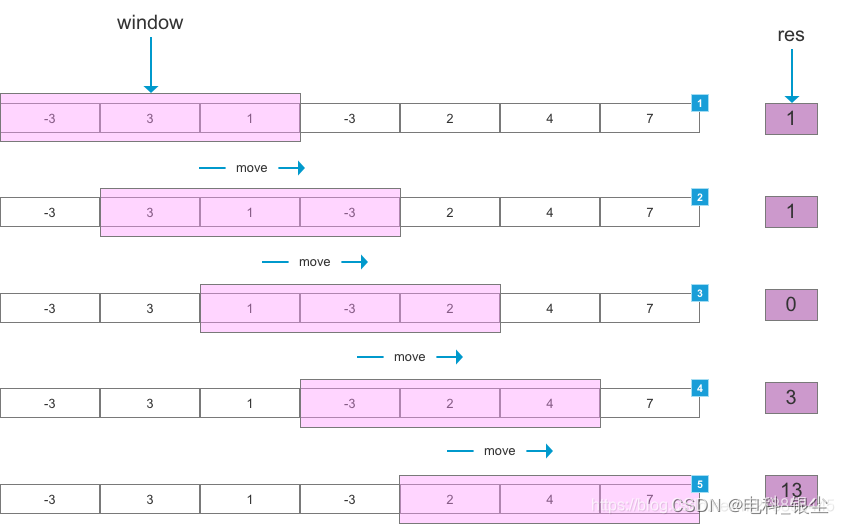
【Python/Pytorch 】-- 滑动窗口算法
文章目录 文章目录 00 写在前面01 基于Python版本的滑动窗口代码02 算法效果 00 写在前面 写这个算法原因是:训练了一个时序网络,该网络模型的时序维度为32,而测试数据的时序维度为90。因此需要采用滑动窗口的方法,生成一系列32…...

Clickhouse集群create drop database可删除集群数据库或只删除本地数据库
集群环境下,在任意一个节点创建数据库,如果加上了ON CLUSTER clustername,则在集群环境的所有节点上都创建了该数据库,并在集群环境的所有节点上都创建了该数据库对应的目录,且数据库的metadata_path对应的目录路径在所…...

【docker】adoptopenjdk/openjdk8-openj9:alpine-slim了解
adoptopenjdk/openjdk8-openj9:alpine-slim 是一个 Docker 镜像的标签,它指的是一个特定的软件包,用于在容器化环境中运行 Java 应用程序。 镜像相关的网站和资源: AdoptOpenJDK 官方网站 - AdoptOpenJDK 这是 AdoptOpenJDK 项目的官方网站&…...

Vscode interaction window
python 代码关联到 jupyter 模式 在代码前添加: # %%print("hellow wolrd!") 参考文档链接: https://code.visualstudio.com/docs/python/jupyter-support-py...
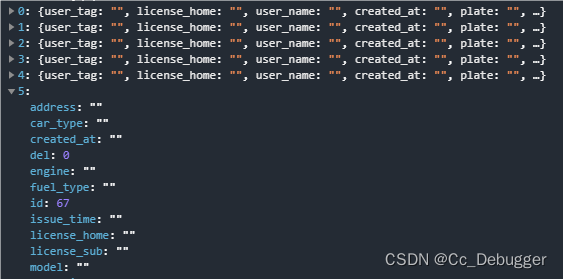
后端数据null前端统一显示成空
handleNullValues方法在封装请求接口返回数据时统一处理 // null 转 function handleNullValues(data) {// 使用递归处理多层嵌套的对象或数组function processItem(item) {if (Array.isArray(item)) {return item.map(processItem);} else if (typeof item object &&…...
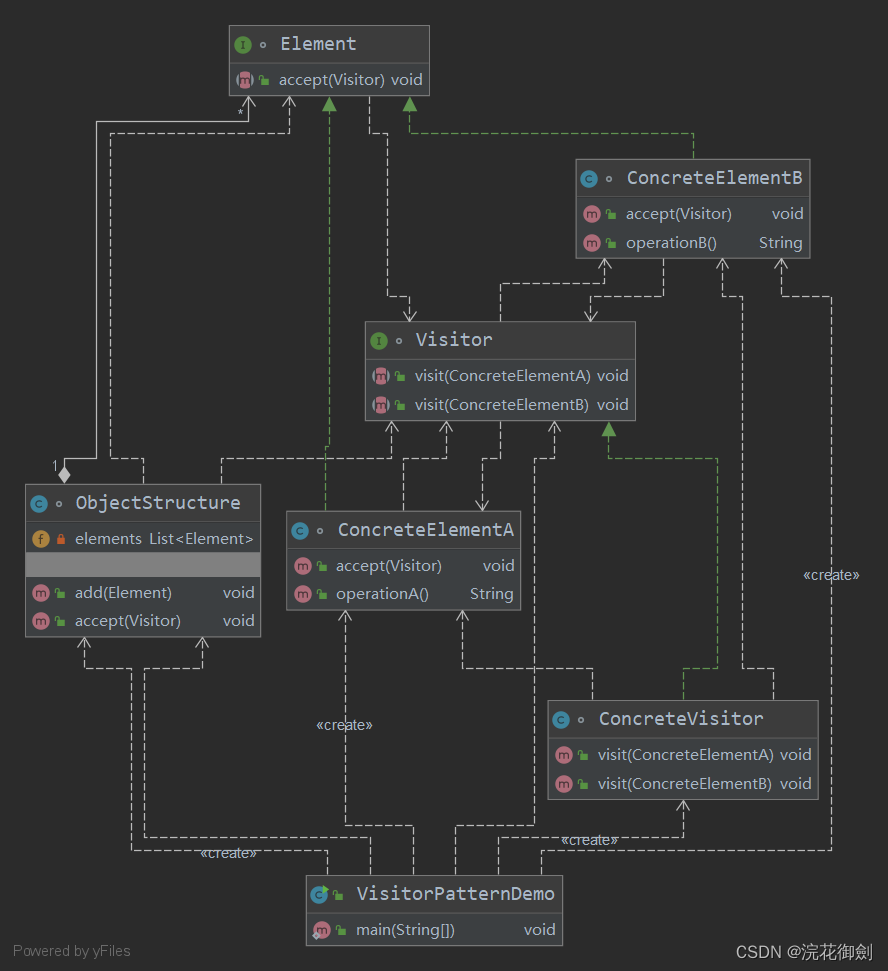
【设计模式深度剖析】【9】【行为型】【访问者模式】| 以博物馆的导览员为例加深理解
👈️上一篇:备忘录模式 | 下一篇:状态模式👉️ 设计模式-专栏👈️ 文章目录 访问者模式定义英文原话直译如何理解呢? 访问者模式的角色类图代码示例 访问者模式的应用优点缺点使用场景 示例解析:博物馆的导览员代码示例 访问…...
Salesforce‘s 爱因斯坦机器人助手引领工业聊天机器人时代
CRM的对话式人工智能助手,根据公司数据提供可靠的人工智能响应及日本工业聊天机器人现状 【前言】 爱因斯坦助手(Einstein Copilot)提供可靠的响应,因为它基于公司独特的数据和元数据,使其能够深入了解公司的业务和客…...

Day7—zookeeper基本操作
ZooKeeper介绍 ZooKeeper(动物园管理员)是一个分布式的、开源的分布式应用程序的协调服务框架,简称zk。ZooKeeper是Apache Hadoop 项目下的一个子项目,是一个树形目录服务。 ZooKeeper的主要功能 配置管理 分布式锁 集群管理…...

计算机组成原理---Cache的基本工作原理习题
对应知识点: Cache的基本原理 1.某存储系统中,主存容量是Cache容量的4096倍,Cache 被分为 64 个块,当主存地址和Cache地址采用直接映射方式时,地址映射表的大小应为()(假设不考虑一致维护和替…...
带来的适配问题:typeHandler)
springboot项目中切数据库(mysql-> pg)带来的适配问题:typeHandler
一、数据表中有一张表,名为role_permission,DDL如下: CREATE TABLE "public"."role_permission" ( "role_id" varchar(64) COLLATE "pg_catalog"."default" NOT NULL, "permiss…...

从零开始的<vue2项目脚手架>搭建:vite+vue2+eslint
前言 为了写 demo 或者研究某些问题,我经常需要新建空项目。每次搭建项目都要从头配置,很麻烦。所以我决定自己搭建一个项目初始化的脚手架(取名为 lily-cli)。 脚手架(scaffolding):创建项目时…...
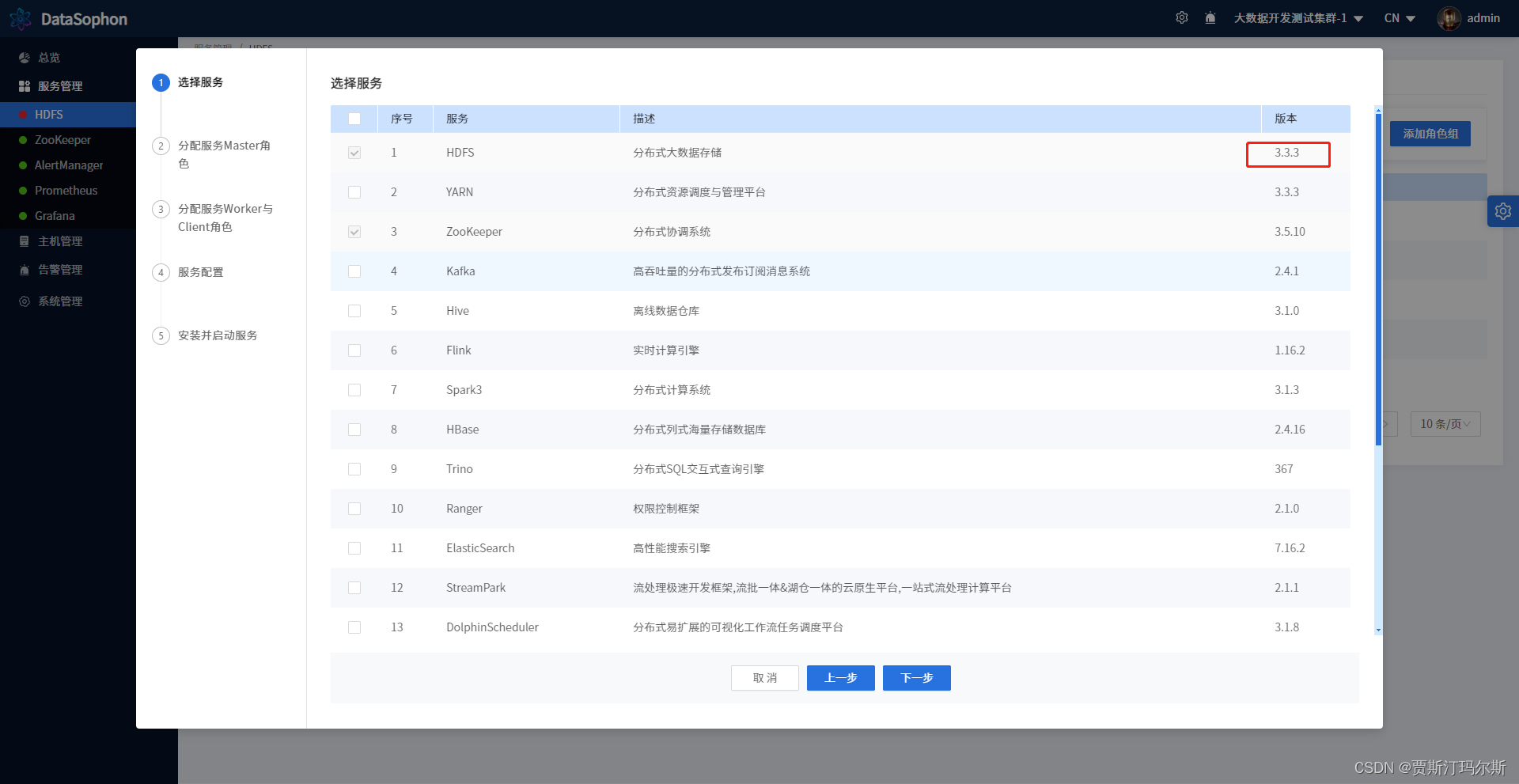
Hadoop升级失败,File system image contains an old layout version -64
原始版本 Hadoop 3.1.3 升级版本 Hadoop 3.3.3 报错内容如下 datasophon 部署Hadoop版本 查看Hadoop格式化版本 which hadoop-daemon.sh/bigdata/app/hadoop-3.1.3/sbin/hadoop-daemon.sh删除原来的旧版本 rm -rf /bigdata/app/hadoop-3.1.3查看环境变量 env|grep HADOOPHAD…...

[机器学习算法]决策树
1. 理解决策树的基本概念 决策树是一种监督学习算法,可以用于分类和回归任务。决策树通过一系列规则将数据划分为不同的类别或值。树的每个节点表示一个特征,节点之间的分支表示特征的可能取值,叶节点表示分类或回归结果。 2. 决策树的构建…...

springboot应用cpu飙升的原因排除
1、通过top或者jps命令查到是那个java进程, top可以看全局那个进程耗cpu,而jps则默认是java最耗cpu的,比如找到进程是196 1.1 top (推荐)或者jps命令均可 2、根据第一步获取的进程号,查询进程里那个线程最占用cpu,发…...
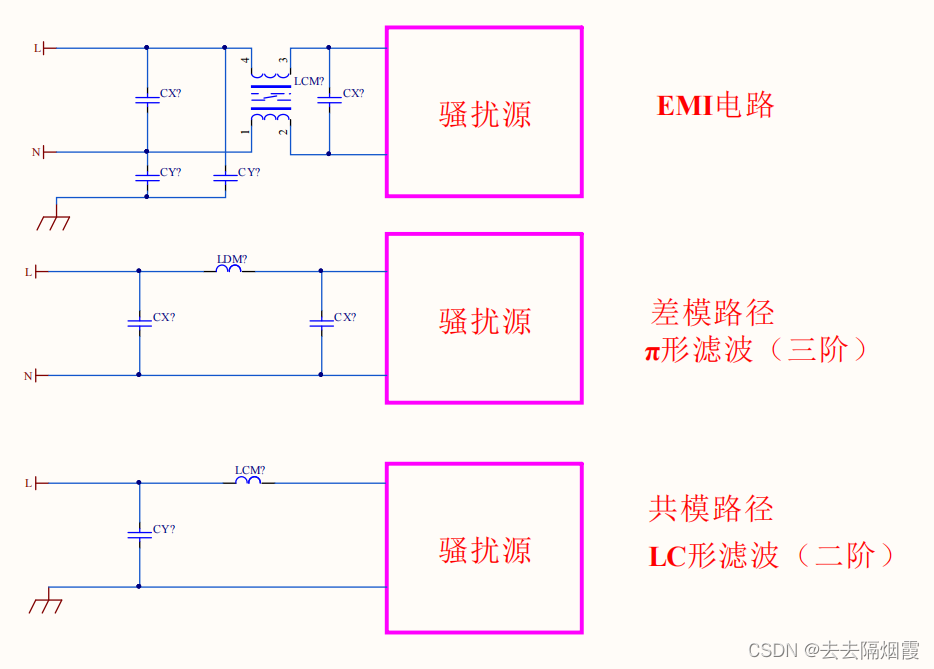
反激开关电源EMI电路选型及计算
EMI :开关电源对电网或者其他电子产品的干扰 EMI :传导与辐射 共模电感的滤波电路,La和Lb就是共模电感线圈。这两个线圈绕在同一铁芯上,匝数和相位都相 同(绕制反向)。 这样,当电路中的正常电流(差模&…...

vue3前端对接后端的图片验证码
vue3前端对接后端的图片验证码 <template> <image :src"captchaUrl" alt"图片验证码" click"refreshCaptcha"></image> </template><script setup>import {ref} from "vue";import {useCounterStore} …...
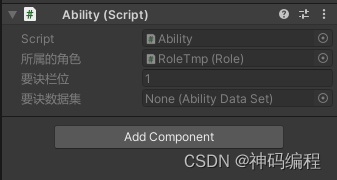
【Unity】RPG2D龙城纷争(四)要诀、要诀数据集
更新日期:2024年6月20日。 项目源码:第五章发布(正式开始游戏逻辑的章节) 索引 简介要诀数据集(AbilityDataSet)一、定义要诀数据集类二、要诀属性1.要诀类型2.攻击距离3.基础命中、暴击率4.基础属性加成5.…...

一种基于非线性滤波过程的旋转机械故障诊断方法(MATLAB)
在众多的旋转机械故障诊断方法中,包络分析,又称为共振解调技术,是目前应用最为成功的方法之一。首先,对激励引起的共振频带进行带通滤波,然后对滤波信号进行包络谱分析,通过识别包络谱中的故障相关的特征频…...

[特殊字符] 智能合约中的数据是如何在区块链中保持一致的?
🧠 智能合约中的数据是如何在区块链中保持一致的? 为什么所有区块链节点都能得出相同结果?合约调用这么复杂,状态真能保持一致吗?本篇带你从底层视角理解“状态一致性”的真相。 一、智能合约的数据存储在哪里…...

前端倒计时误差!
提示:记录工作中遇到的需求及解决办法 文章目录 前言一、误差从何而来?二、五大解决方案1. 动态校准法(基础版)2. Web Worker 计时3. 服务器时间同步4. Performance API 高精度计时5. 页面可见性API优化三、生产环境最佳实践四、终极解决方案架构前言 前几天听说公司某个项…...
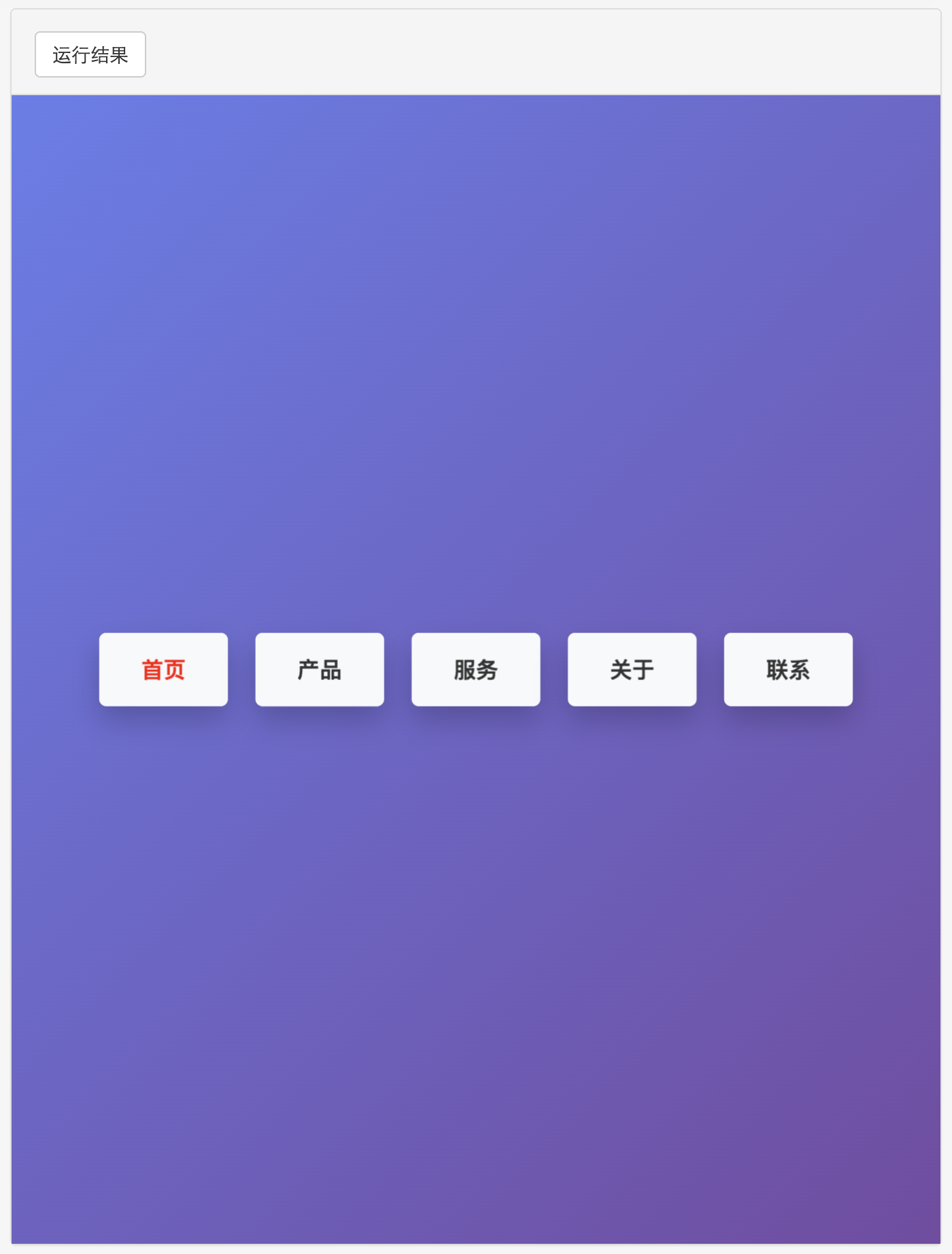
多种风格导航菜单 HTML 实现(附源码)
下面我将为您展示 6 种不同风格的导航菜单实现,每种都包含完整 HTML、CSS 和 JavaScript 代码。 1. 简约水平导航栏 <!DOCTYPE html> <html lang"zh-CN"> <head><meta charset"UTF-8"><meta name"viewport&qu…...
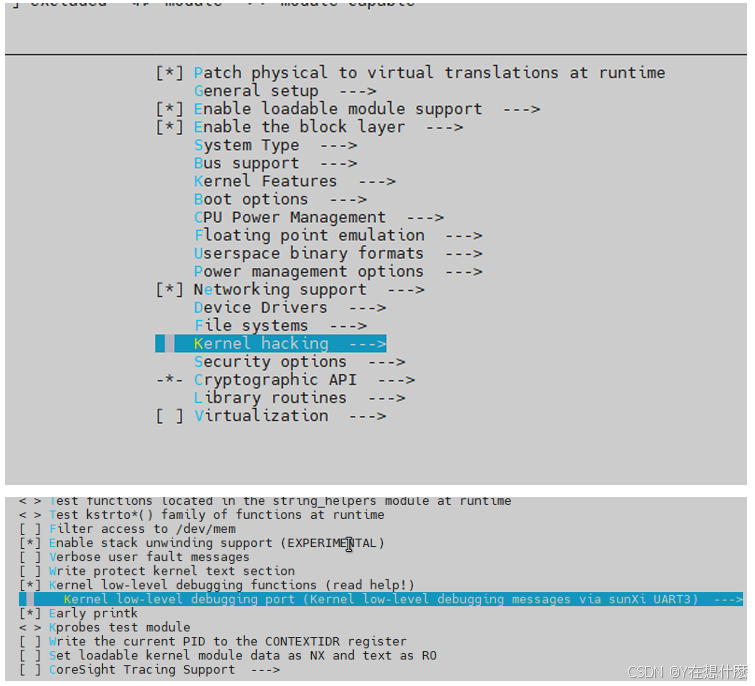
全志A40i android7.1 调试信息打印串口由uart0改为uart3
一,概述 1. 目的 将调试信息打印串口由uart0改为uart3。 2. 版本信息 Uboot版本:2014.07; Kernel版本:Linux-3.10; 二,Uboot 1. sys_config.fex改动 使能uart3(TX:PH00 RX:PH01),并让boo…...
中关于正整数输入的校验规则)
Element Plus 表单(el-form)中关于正整数输入的校验规则
目录 1 单个正整数输入1.1 模板1.2 校验规则 2 两个正整数输入(联动)2.1 模板2.2 校验规则2.3 CSS 1 单个正整数输入 1.1 模板 <el-formref"formRef":model"formData":rules"formRules"label-width"150px"…...

学校时钟系统,标准考场时钟系统,AI亮相2025高考,赛思时钟系统为教育公平筑起“精准防线”
2025年#高考 将在近日拉开帷幕,#AI 监考一度冲上热搜。当AI深度融入高考,#时间同步 不再是辅助功能,而是决定AI监考系统成败的“生命线”。 AI亮相2025高考,40种异常行为0.5秒精准识别 2025年高考即将拉开帷幕,江西、…...

python报错No module named ‘tensorflow.keras‘
是由于不同版本的tensorflow下的keras所在的路径不同,结合所安装的tensorflow的目录结构修改from语句即可。 原语句: from tensorflow.keras.layers import Conv1D, MaxPooling1D, LSTM, Dense 修改后: from tensorflow.python.keras.lay…...

蓝桥杯 冶炼金属
原题目链接 🔧 冶炼金属转换率推测题解 📜 原题描述 小蓝有一个神奇的炉子用于将普通金属 O O O 冶炼成为一种特殊金属 X X X。这个炉子有一个属性叫转换率 V V V,是一个正整数,表示每 V V V 个普通金属 O O O 可以冶炼出 …...
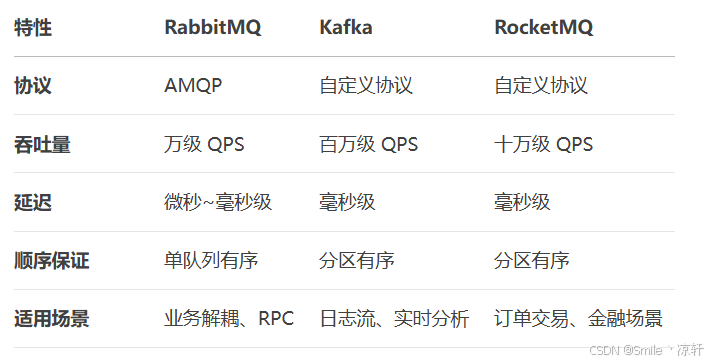
技术栈RabbitMq的介绍和使用
目录 1. 什么是消息队列?2. 消息队列的优点3. RabbitMQ 消息队列概述4. RabbitMQ 安装5. Exchange 四种类型5.1 direct 精准匹配5.2 fanout 广播5.3 topic 正则匹配 6. RabbitMQ 队列模式6.1 简单队列模式6.2 工作队列模式6.3 发布/订阅模式6.4 路由模式6.5 主题模式…...
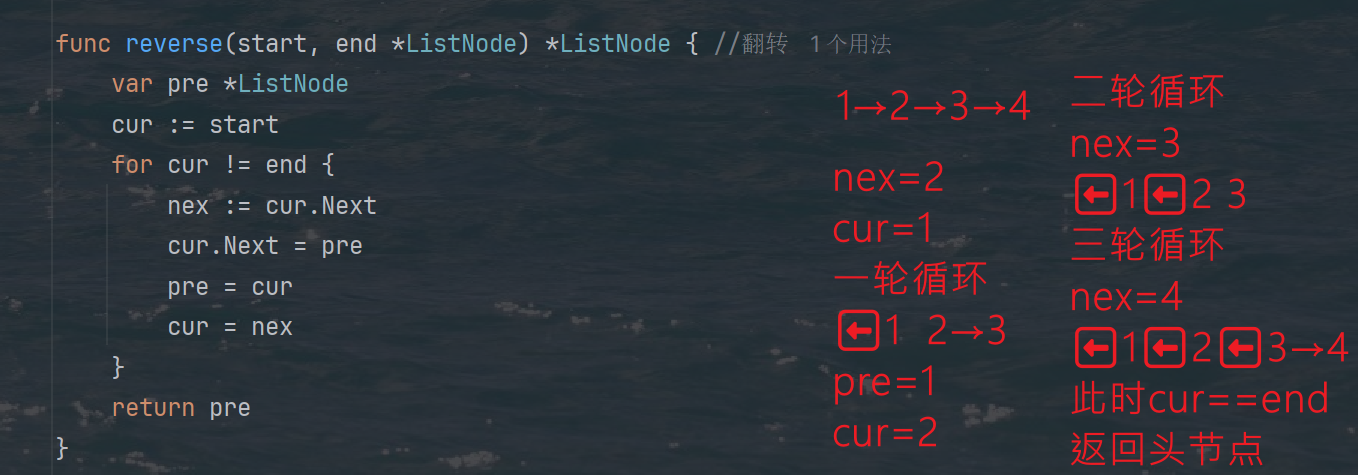
力扣热题100 k个一组反转链表题解
题目: 代码: func reverseKGroup(head *ListNode, k int) *ListNode {cur : headfor i : 0; i < k; i {if cur nil {return head}cur cur.Next}newHead : reverse(head, cur)head.Next reverseKGroup(cur, k)return newHead }func reverse(start, end *ListNode) *ListN…...
